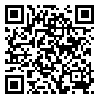Volume 5, Issue 5 (2015)
LRR 2015, 5(5): 183-206 |
Back to browse issues page
1- Associate Professor, Department of Linguistics, Tarbiat Modares University, Tehran, Iran
2- Assistant Professor, Department of Linguistics & Foreign Languages, Payam Noor University, Tehran, Iran
3- M.A., Department of Linguistics, Payam Noor University, Tehran, Iran
2- Assistant Professor, Department of Linguistics & Foreign Languages, Payam Noor University, Tehran, Iran
3- M.A., Department of Linguistics, Payam Noor University, Tehran, Iran
Abstract: (16666 Views)
Cognitive poetics answers to the fundamental questions on the cognitive tools of art, language and literature. This is the strong point of this approach over the other approaches, especially literary theory, which has limitations such as inability to understand how different meanings are created and various interpretations of literary texts are possible. This paper explores how to connect the text world to the reader’s world to interpret the text and extend the reader's mental spaces in the understanding of literary texts as the research field. The main aim is the application of a model for the free reading of such interpretation, which is left to the person who relies on the opinion of cognitive poetics. Analysis of the story of Shazde Ehtejab (Golshiri, 1384/2005) is to check the elements in building the story. The questions are: 1) Which of the building elements of the story of Shazde Ehtejab can be identified by the Text World Theory? and 2) How does the identification of these elements help to interpret different text worlds? The answers to these questions (three layers of the text -“text world”, “discourse world” and “sub world”) are identified based on the Text World Theory, which is involved in building of the story. Then the link between the micro-text worlds in the form of included text world that has emerged in the mind of the Shazde and formed the original text world of the story, would be shown. The contrast between the characters and the mental spaces that are occurred through their thoughts, and form the smaller text worlds within the Shazde’s original text world, would be effective in systematic interpretation of the text.
Keywords: Cognitive poetics, Text world theory, Text-world, Discourse world, Sub-world, Shazde Ehtejab
| Rights and permissions | |
 |
This work is licensed under a Creative Commons Attribution-NonCommercial 4.0 International License. |

